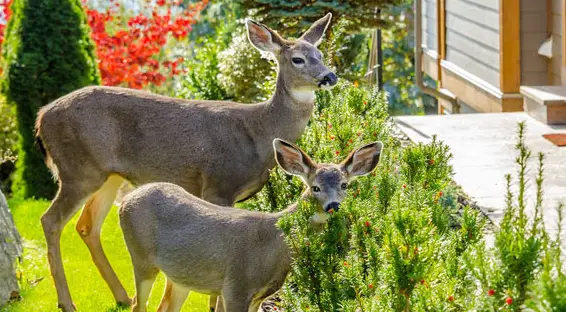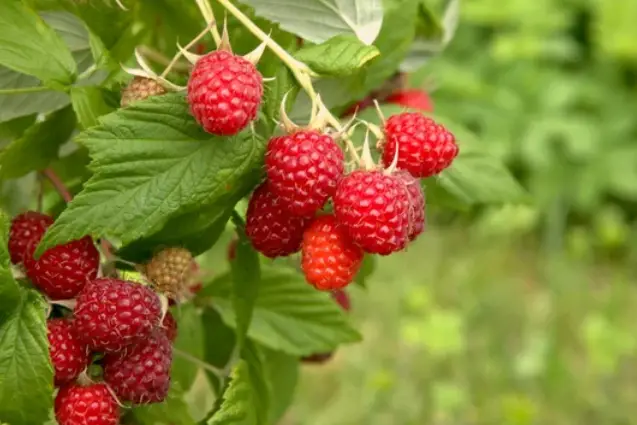Plants Poisonous to Deer: Understanding What to Avoid
As any gardener knows, deer can be voracious eaters, nibbling on plants and shrubs with gusto. While most plants are not toxic to deer, there are a few that can cause harm. Whether you’re a seasoned gardener or a beginner, understanding which plants deer avoid due to their toxicity is essential for maintaining a thriving garden. In this detailed blog post, we’ll explore common poisonous plants that deer steer clear of and provide insights into creating a deer-resistant landscape.

1. Foliage Texture Matters
Deer have sensitive mouths, and certain plant textures deter them from grazing. Here are some foliage characteristics that deer tend to avoid:
- Fuzzy or Prickly Leaves: Plants with tiny hairs or spines, such as lamb’s ear (Stachys byzantina), can feel scratchy or unpleasant in deer mouths.
- Finely Textured Leaves: Ornamental grasses and wispy flowers like baby’s breath (Gypsophila) are less appealing to deer.
2. Toxic Plants
While deer are known to eat a wide variety of vegetation, some plants are toxic to them. Here are a few poisonous plants that deer typically avoid:
- Daffodils (Narcissus): These spring-blooming flowers contain toxins that deter deer. All parts of the daffodil plant—bulbs, leaves, and stems—are unpalatable to them.
- Foxgloves (Digitalis): Foxgloves produce beautiful bell-shaped flowers but contain cardiac glycosides that are toxic to deer.
- Monkshood (Aconitum): Monkshood’s striking blue or purple flowers are highly poisonous to deer.
- Poppy (Papaver): Poppies contain alkaloids that make them unappealing to deer.
3. Nightshade Family Plants
Deer avoid plants from the nightshade family (Solanaceae), which includes:
- Tomatoes (Solanum lycopersicum)
- Eggplant (Solanum melongena)
- Peppers (Capsicum)
- Potatoes (Solanum tuberosum)
These plants contain toxic compounds that deer instinctively avoid.
4. Poison Ivy and Poison Oak
Surprisingly, deer consume poison ivy (Toxicodendron radicans) and poison oak (Toxicodendron diversilobum) without apparent harm. Birds also eat poison ivy berries. However, humans should still avoid these plants due to their skin-irritating properties.
5. Creating a Deer-Resistant Landscape
To minimize deer damage, consider the following strategies:
- Choose Native Plants: Native species are often less appealing to deer.
- Use Repellents: Apply deer repellents or install motion-activated sprinklers.
- Plant Strongly Scented Herbs: Deer dislike strong-smelling herbs like catmint (Nepeta), lavender (Lavandula), and thyme (Thymus).
- Install deer fencing: If feasible, erect deer-proof fencing around vulnerable areas.
Remember that deer-resistant doesn’t mean deer-proof. While these plants are less likely to be eaten, hungry deer may still sample them. By selecting wisely and implementing protective measures, you can strike a balance between a beautiful garden and coexisting with wildlife.
How to Create a Deer-Proof Garden?
Creating a deer-proof garden requires a combination of strategies to deter these hungry visitors. Let’s explore some effective tactics:
- Choose deer-resistant plants:
- Opt for plants that deer tend to avoid. Look for the following traits:
- Fuzzy or Hairy Foliage: Plants with small hairs on leaves, such as lamb’s ear (Stachys byzantina), are less appealing to deer.
- Strongly Scented Herbs: Herbs like catmint (Nepeta), lavender (Lavandula), and thyme (Thymus) have fragrances that deer dislike.
- Fine-Textured Leaves: Ornamental grasses and wispy flowers are less attractive to deer.
- Opt for plants that deer tend to avoid. Look for the following traits:
- Install physical barriers:
- Erect deer-proof fencing around vulnerable areas.
- Use chicken wire or deer netting to protect specific plants or garden beds.
- Consider motion-activated sprinklers to startle deer away.
- Repellents and deterrents:
- Apply deer repellents containing strong scents or taste deterrents.
- Hang deodorant soap bars or human hair around the garden perimeter.
- Change repellents periodically to maintain effectiveness.
- Plant Strategically:
- Place deer-resistant plants near the garden’s edge.
- Surround vulnerable plants with less appealing options.
- Mix in some native species, as they are often less attractive to deer.
References:








